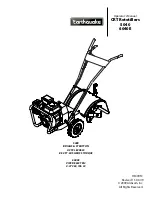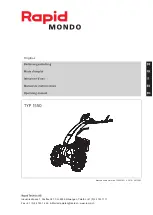
© Valeport Limited 2003
MIDAS Surveyor Operating Manual
Page 9
0420805d.doc
3.4
MEMORY
The unit is fitted with 16Mbyte FLASH memory (32Mbyte optional). The instrument will log data at up to 0.5Mbyte per
hour, so the memory will last for a nominal 32 hours (or 64 hours). The FLASH memory is non-volatile, so no data will be
lost even if the instrument batteries are completely run down.
3.5
OTHER INPUTS
3.5.1
REMOTE EVENT MARKER
The MIDAS Surveyor is fitted with a Marker button to allow the user to mark specific points during the survey. This cable
should be fitted to the appropriate connector. The mark may be made either by pressing the button on the remote
marker cable during operation, or by pressing the F3 key on the instrument panel. Note that the addition of a mark to the
record is indicated by a beep from the instrument, and by the display of a vertical line on the graphical trace. Marking will
only occur while the instrument logging function is turned ON.
3.5.2
DIFFERENTIAL GPS CORRECTION
The instrument is supplied with either a 12 or 16 channel SBAS enabled DGPS receiver. If the user has an alternative
GPS or Differential receiver, it should be connected to the appropriate connector on the MIDAS Surveyor (wired as per
Section 6). If an external differential source is used, the unit will automatically assume that it is better than the standard
SBAS correction, and will use it instead. If a full external GPS input is used, the internal GPS receiver should be
disabled, as described in Section 4.2.10.1.
3.5.3
TIDAL CORRECTION
The depth of water under the boat will naturally vary with the tide cycle. The MIDAS Surveyor has been designed to take
in data from an external source, typically a Valeport Model 740 tide gauge radio receiver. This data is logged within the
unit as it is received (typically at 1 or 5 minute intervals), and may be used to provide a real time correction of the water
depth as measured by the echosounder.
The tide gauge receiver unit should be connected to the Surveyor using the standard RS232 input lead (wired as
described in Section 6). The tidal data correction function should be enabled / disabled in the MIDAS Surveyor, as
described in Section 4.2.11.2.
3.5.4
HEAVE CORRECTION
Wave activity and boat motion may cause the depth of water below the echosounder transducer to change rapidly. This
effect may be eliminated by using a Heave sensor to measure the rapid changes in vertical position of the transducer. If
the vessel is fitted with such a sensor, its output may be logged by the MIDAS Surveyor and used to correct the depth
readings in real time.
The Heave Sensor should be connected to the Surveyor using the standard RS232 input lead (wired as described in
Section 6). The heave correction function should be enabled / disabled in the MIDAS Surveyor, as described in Section
4.2.11.3.










































